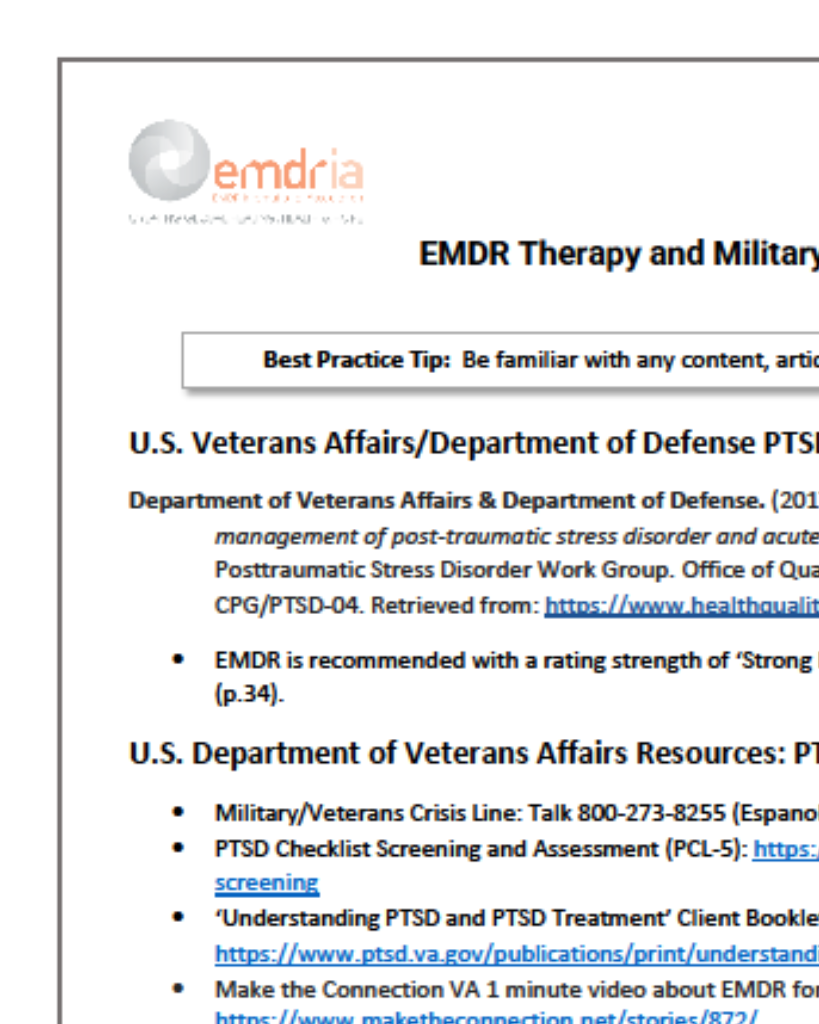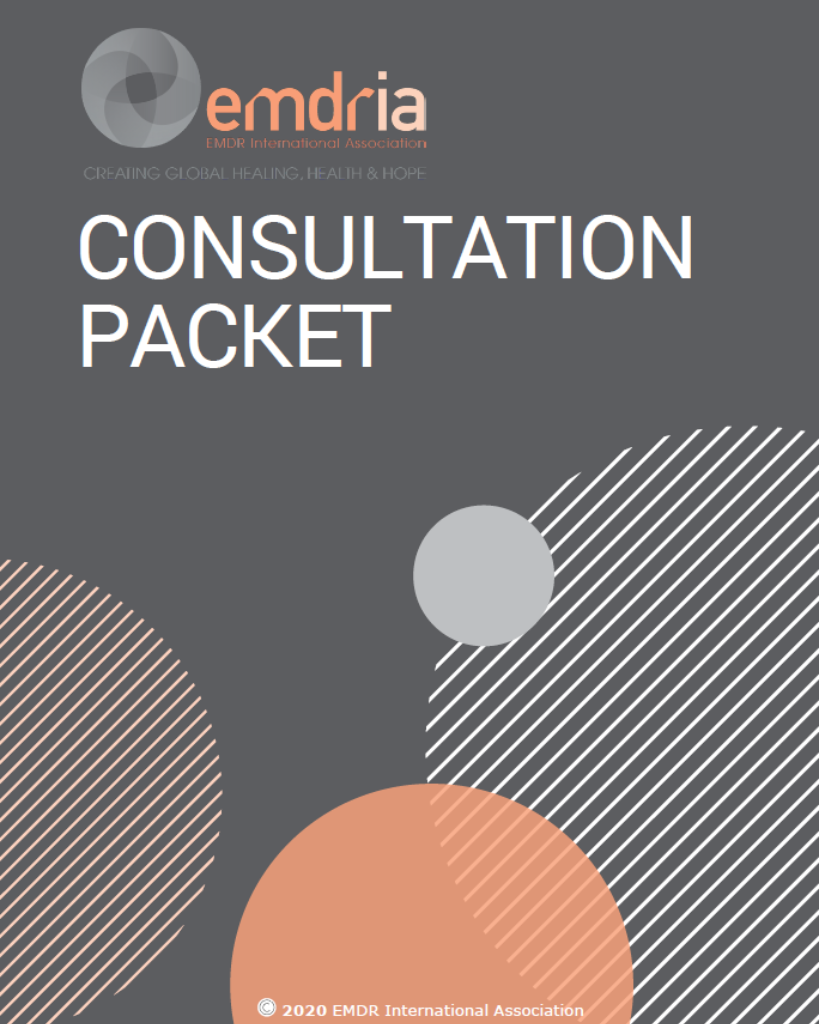Treatments for PTSD 5: EMDR – Featuring Marianne Silva
In this episode of PTSD Bytes, we learn about EMDR for PTSD from licensed clinical social worker and certified EMDR therapist Marianne Silva.
Podcast Description
“What is EMDR?
EMDR stands for Eye Movement Desensitization and Reprocessing, which is a type of therapy used to treat posttraumatic stress disorder (PTSD). During this treatment, you may look at something that moves back and forth or listen to tones go back and forth in either ear while you think of a specific trauma.
As you do this repeatedly, you will notice that the way you feel about the memory starts to shift. Often, the memory will feel less distressing or painful. We do not know exactly how this back-and-forth movement or sound helps to process the trauma memory but research shows that EMDR is one of the most effective treatments for PTSD.
At the beginning, your therapist will ask you about your history and symptoms. You’ll then work together to develop your coping skills, so you’re prepared to focus on the painful memories. You’ll decide together with your therapist which trauma memory you would like to focus on first.
When processing a memory, you will hold it in your mind – including related physical and emotional feelings – while also paying attention to the back-and-forth movement or sound. You’ll do this for about 30-60 seconds. Then you’ll talk about what you noticed. You do not need to talk about the trauma itself in detail. Your therapist will make sure you stay within the right comfort zone, so you don’t become overwhelmed.
You will repeat this process until eventually you’re able to think of the trauma without feeling distressed or anxious. Then you and your therapist will decide together if you will focus on other memories. Sessions may last 60-90 minutes. On average, people see improvements within three months of weekly treatment.
The free mobile app PTSD Coach has tools that can support the work you’re doing. For example, coping techniques such as breathing or guided imagery tools can be used both during and between sessions. You can also create your own tools in PTSD Coach, such as adding a video, photo, or text specifically adapted for your EMDR work.
How can you get EMDR therapy?
If you receive VA care, ask your primary care or mental health provider if EMDR is available at your location. Outside of VA, you can search the EMDR International Association directory at EMDRIA.org for EMDR-trained therapists around the world.
Additional links
- Search “EMDR” for Videos of Veterans talking about their experiences
- Find more EMDR information on the National Center for PTSD website
- Read more PTSD Bytes episodes
If you are a Veteran who is experiencing a crisis or supporting a loved one who is, call 1-800-273-8255 and press 1 for immediate assistance, or chat online at VeteransCrisisLine.net/chat.”
—Description from publisher
Podcast Access
Open Access
Jamison, A. L. (Host). (2022, May 3). Episode 8 Treatments for PTSD 5: EMDR – Featuring Marianne Silva, LCSW [Audio podcast episode]. In PTSD Bytes, VA Podcast Network. Open access: https://news.va.gov/102939/ptsd-bytes-8-treatments-for-ptsd-5-emdr/
Date
May 3, 2022
Creator(s)
Marianne Silva
Contributor(s)
Andrea L. Jamison
Topics
PTSD
Client Population
Military/Veterans
Extent
11 minutes, 31 seconds
Publisher
VA Podcast Network
APA Citation
Jamison, A. L. (Host). (2022, May 3). Episode 8 Treatments for PTSD 5: EMDR - Featuring Marianne Silva, LCSW [Audio podcast episode]. In PTSD Bytes, VA Podcast Network. Open access: https://news.va.gov/102939/ptsd-bytes-8-treatments-for-ptsd-5-emdr/
Audience
EMDR Therapists, General/Public
Language
English
Content Type
Podcast
Access Type
External Resource, Open Access





